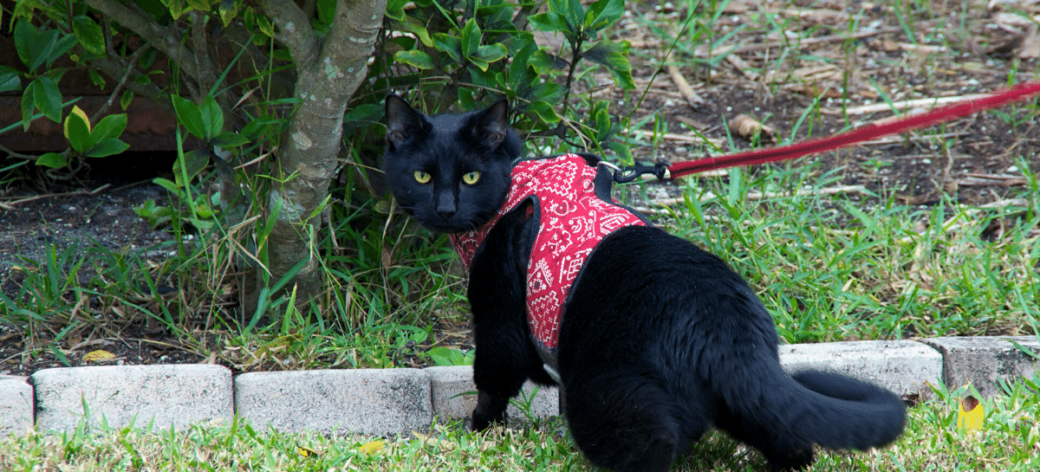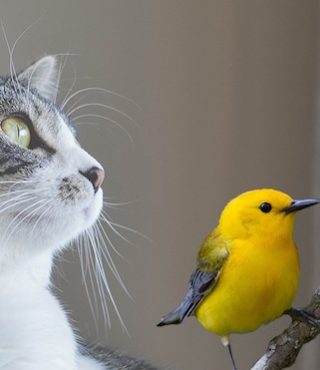Curiosity killed the… birds

This blog is written by Samantha Hobson.
In North America, bird populations are declining due to a variety of human activities. Accessing data from monitoring networks, researchers found that North American bird populations have decreased by 29 % since 1970. This is a loss of close to 3 billion birds, which suggests an urgent need to address factors that are contributing to bird mortality.
Birds are helpful indicators of environmental health because of their important roles in food webs and the ecosystem services they provide by pollinating plants, dispersing seeds, and controlling insect populations. Without direct conservation action, researchers predict that bird populations will continue to decline. Along with climate change, habitat loss, and many other human-driven factors, predation by domestic cats is a notable threat to birds and other wildlife.
Fortunately, it is possible to be a cat lover and a conservation advocate by taking action to protect wildlife from the curiosity of our cats. Keeping cats indoors and supervising outdoor access can prevent them from killing wildlife and benefits the cats by keeping them safe from disease, traffic, and other outdoor-related injuries.
Here are a few tips to transition cats indoors and modify outdoor access:
- Start the transition by gradually increasing the amount of time your cat spends indoors and introducing new elements to your home environment that will entertain your cats. Scratching, climbing, and playing are all-natural cat behaviors that can be promoted indoors. Cat towers covered with carpet or twine can be a scratching post, window perch, and a climbing structure all in one. Window perches and towers also give cats the ability to look outside or to claim their own space away from other household pets and children if they choose.
- Toys are a great way to keep indoor cats active and mentally stimulated. Alternating toys every few days and adding interactive toys will continuously engage your cat in playtime. Using feathered wands and tossing toys will have your cat pouncing and playing. Some cats will even play fetch with you!
- For cats who are highly motivated by food, puzzle toys and treat balls turn snack-time into an entertaining activity. Catnip and cat grass are other exciting additions to your cat’s routine. You can even grow both at home indoors and in your garden.
- To modifying outdoor access, a harness and leash will keep your cat close while you supervise them. A harness can take some time to get used to, so be patient and make the experience positive for your cat.
- If you don’t like the idea of a harness, you can modify your yard with cat enclosures or cat fencing to keep your cat safe from outdoor hazards and prevent them from hunting wildlife. Also known as “catios”, enclosures can be purchased or built as a DYI project at home. Cat fencing works by preventing your cat from climbing up fences, and keeping them safely in your yard.
There are plenty of ways to keep your cat entertained and active. Do you have any tips to add? Let us know here!








